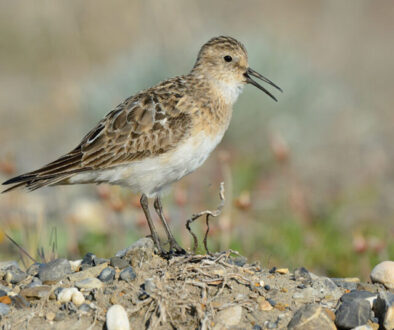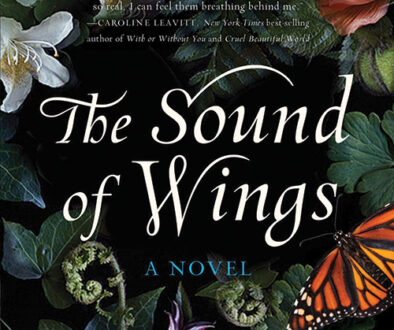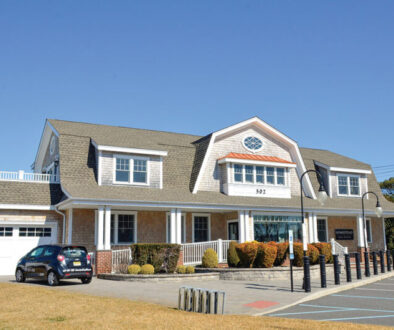A Village within a City

Village Greene passes 50 years old…but who is counting or even thinking about this mid-century modern subdivision designed to bring people into Cape May following the 1962 Nor’easter? The front page of the April 29, 1965 Cape May Star and Wave features a photograph of the key players at the groundbreaking in front of a huge sign announcing Village Greene Town Houses with “living for the retirement and vacation buyer.” Frank Gauvry, then-mayor of Cape May, Thomas Brodesser, Jr., Phillip Robinson, developers, Superintendent Joseph Vaspoli and Councilmen John D. Jones and W. Harry Reeves are shown with the groundbreaking shovel. The caption states that the 500-structure, 2400-unit project will be ready for occupancy by June 15.
Village Greene is built on the remnants of a turn-of-the-century major land development project. The 1901 East Cape May project remains as just a few blocks of this ambitious but unsuccessful endeavor. Designed at the turn of the century to revive Cape May, this huge development project barely lasted until 1915 when many of the lots and land were sold at Sheriff’s sale to pay back taxes owed to the city. What was accomplished is the harbor (later expanded), buildable lots, and the plan for the East Cape May development.
Dredging of the Cape May Harbor went on for several years and provided the sand to fill in more than 2000 acres of salt marsh meadow. By 1905, 3600 lots had been reclaimed, and more were created in later years. The East Cape May project included 5400 acres of land extending east from Madison Avenue to the newly created harbor and north from the ocean to approximately Washington Street. The present-day lots and street names retain the 1901-designed layout and then-modern Atlantic City tradition of using states and cities as street names.
Central to the East Cape May design was Cape May Avenue, which still bisects the area from east to west in two-way streets with an island in the middle to separate the lanes. As the lots sold, Cape May Avenue became the northern boundary above which lots were unsold and streets, while shown on paper, had not yet been constructed. The houses built during the development were located on actual streets and primarily on the beachfront, between Madison and Pittsburgh Avenues, and south of Cape May Avenue.
Nathan Robinson purchased this land north of Cape May Avenue in 1954 at a Sheriff’s sale almost 40 years after the bankruptcy of the East Cape May project. Cape May had still not regained its historic position as a major seaside resort and city leaders were already looking for new ways to regain economic stability. Then, Cape May was hit with the 1962 Nor’easter that not only destroyed much of the beach and beachfront property but required major efforts to repair the town. One solution was to bring more people into town, either as summer homeowners or retirees. Phillip Robinson, Nathan’s son, took over this property after his father’s death, and the idea to create a self-contained subdivision, a Village Greene, was born. But he needed support from the city and a local partner. City Council passed resolutions in 1965 agreeing to significant financial investment to put in the streets, run city water and sewer lines, electric lines, and other improvements for Cape May Greene, Inc., which would build the homes on the improved streets. Robinson’s partner became Thomas Brodesser, Jr., a Philadelphian and contractor, who had relocated to Cape May County and was doing a lot of work putting in sewer lines and rebuilding jetties along the beachfront for most Cape May County shore towns, including Cape May City. Village Greene was the first of their joint activities and of Mr. Brodesser’s many projects in Cape May County.
Longtime Cape May residents and visitors know Village Greene, but this subdivision is not so obvious if you don’t know where to look. Located on the portion of the East Cape May project land that had once been salt marsh, the houses were built from 1965 through the early 1980’s on lots west of Pittsburgh and north of Cape May Avenue. The first houses were located off Pittsburgh and on Ohio Avenue, then expanding northward to Virginia, Illinois, and Pennsylvania Avenues as sales warranted. Potential buyers could visit sample homes located at Pittsburgh and Illinois Avenues, pick the model they wanted and, within the subdivision lot plan, select a lot where they wanted the house to be located. A small number of houses were built for speculation. The subdivision was designed so that twins and quads were grouped together and not interspersed; for example, quads might be on one side of a block and twins on the other, as is the case on blocks on Virginia Avenue and other Village Greene streets.
Bringing new people into Cape May was an important objective of both city governmentand of Village Greene developers. Often, the sales manager or staff would give talks to organizations throughout the region to inform their members about Village Greene opportunities. In 1967, for example, Joseph Falls, sales manager, presented Village Greene to the 600-member Bergen Retired Educators Association using both promotional film and illustrative materials. Houses were selling for a beginning price of $9,450 and, in addition to city water and sewer, included “attic storage space with a disappearing staircase, ceramic tile baths with a vanity, furniture finish custom kitchen cabinets, and Formica countertops.”

The subdivision was also frequently and widely advertised in local and regional newspapers, typically with an illustration of a model house. An ad from the Philadelphia Daily News in April 1969 describes all-electric two-bedroom twins and quads starting at $11,900. This price included “wall-to-wall carpeting, city water and sewer, plus all other city conveniences…. spaciously and smartly appointed to insure [sic] a life free from all the minor inconveniences so often connected with vacation living.” The ad noted that “Monroe Sandberg, builder, reports a new single, 3-bedroom ranch home now on the drawing boards will preview sometime this summer.”
The first single family houses were not built until after 1972 and were located on Cape May Avenue and a few of the streets north of Pennsylvania Avenue. Development had been slowed somewhat to put in water and sewers and other infrastructure for the streets north of Pennsylvania Avenue. As always, times were changing, and people wanted more in a second home. But, even as single-family homes were added into the subdivision, affordability remained a goal. By 1979, single family homes were advertised by Cape Greene, Inc. starting at $68,900 with three models to choose from, three or four-bedroom models, one and one-half or two and one-half bathrooms, all “with garages, central air conditioning, laundry/utility rooms, kitchens with all appliances included and custom kitchen cabinets with adjustable shelves,” obviously, keeping up with consumer preferences.
Bill Garton, a contractor who began working on Village Greene houses in the late 1960s and early 1970s (and who still does repairs and construction at Village Greene) recalled that the project was a little slow to get off the ground due to small numbers of house sales in combination with staff and construction worker turnover. Work also slowed for about a two-year span in the late 1960s/early 1970s to put in sewers north of Pennsylvania Avenue. When Village Greene was begun, its development was promoted and supported by a city administration that was voted out of office in 1972 and replaced by a new mayor and council. Mayor Bruce Minnix had extensive support from people who were recent residents of Cape May and saw a future and growth in preservation. After losing the 1976 election, this one-term mayor and council was described in a New York Times article as maybe being a little too one-sided. It was noted that shops and restaurants and projects like the Physick Estate and Mid Altantic Center for the Arts (now MAC Cape May) thrived while “…construction stopped. Officially it was just a ban on new sewer connections, but the effect was to halt new building.” Major construction projects like Village Greene floundered.
Phil Robinson recruited his nephew, Dave Robinson, currently the owner of the Holly Shores Resort with his wife Maggy Brodesser, to come to Cape May to do sales and oversight at Village Greene. Dave worked from 1972 to 1976. He remembers that when he sold houses “quads were selling for $8,990 and twins were selling for $12,990. Singles were in the low $20,000 [range]. The early sales were to both retirees and vacation folks from Pennsylvania and New Jersey. I laugh when I think about the question many of those folks posed, ‘do you think I am making a good investment?’ I never gave them a definitive ‘yes’. I said that Cape May has only so much land available and values should eventually go up.”
And, so they have gone up—but then it is, after all, 50 or more years since these homes were constructed. Nonetheless, people who have owned their Village Greene homes for decades echo amazement at today’s property sales prices.
The glue that holds Village Greene together both as a physical subdivision and an enduring community of year-round and summer residents is the Village Greene Civic Association (capemayvillagegreene.com). Founded in 1975, the group carries out many different civic and social activities to keep residents up to date with what is going on, bring them together socially, keep track of issues in the neighborhood, and represent them in city government matters. The Association’s current president, Barbara Caldwell, is helped by the vice-president, Gus Mosso, and other members to implement a wide range of activities, many of which, like face-to-face meetings, have been curtailed by the pandemic restrictions, while others are challenging to implement due to lack of volunteers. As is the case in other areas of Cape May, the people who purchased Village Greene houses in the early days did so to have summer retreats that for many became retirement homes. Many of these early buyers have aged along with their homes, which are often sold to much younger people who use them more frequently as income producing rentals than for personal use. Even with these situations, the Association has pride in this community and more than 200 members.
The Village Greene community, with its diminishing year-round resident population, retains the values that distinguish this distinctive area from other Cape May neighborhoods. Of primary importance to Village Greene residents are things like knowing your neighbors or maintaining your property that are generally important to everyone but which they are able to promote through the Association activities. Most residents support maintaining the original characteristics of the Village Greene development—meaning the height of the buildings (primarily single story), the street setbacks, fences, and other physical features. Fortunately, with a very few exceptions, the entire Village Greene development is zoned as R-4 (Residential Modified Medium Density) establishing these characteristics uniformly in the Cape May Zoning Code. While there is concern that these regulations are not always consistently applied, the code basically supports what many residents would like to have happen, which is to keep this development without major negative physical changes.
More than 50 years ago, Village Greene was a right time/right place idea to help drag Cape May out of economic doldrums and revitalize a community that had been badly damaged by reduced tourism and devastating storms. In the center of town, redevelopment occurred with a focus on its Victorian buildings. Private and city government investment banded together on the outskirts of town with Village Greene, designed to increase ratables with affordable housing for retirees and year-round and second homeowners.
Entrepreneurial developers, creators of Village Greene, and long-time friends, Phil Robinson and Tom Brodesser, both passed away recently, having lived long, successful lives into their 90s, and leaving their mark on Cape May.



